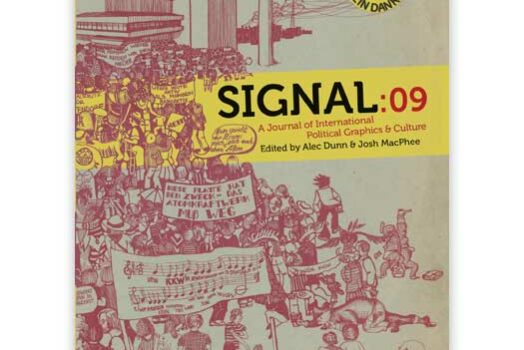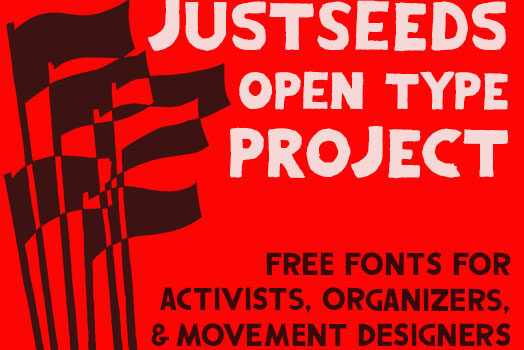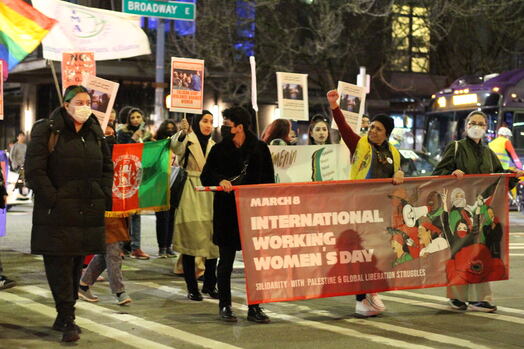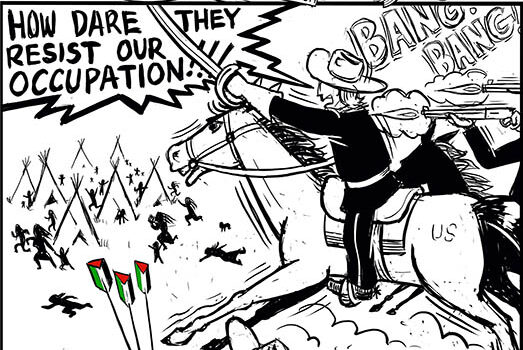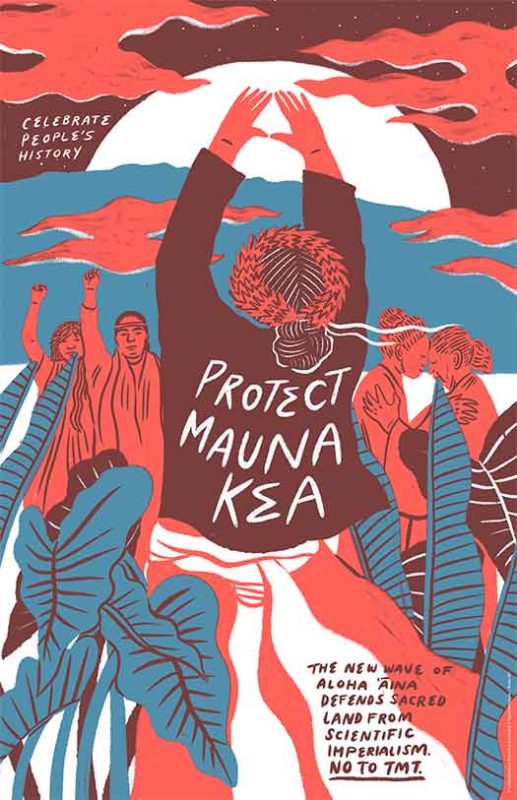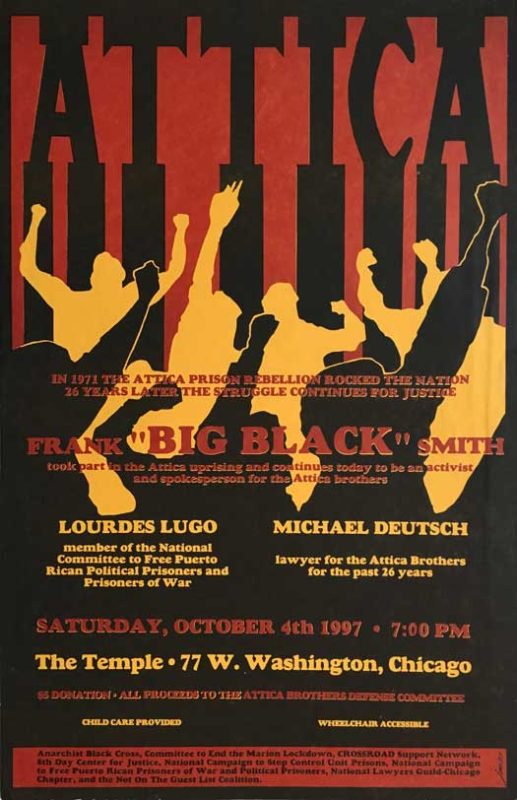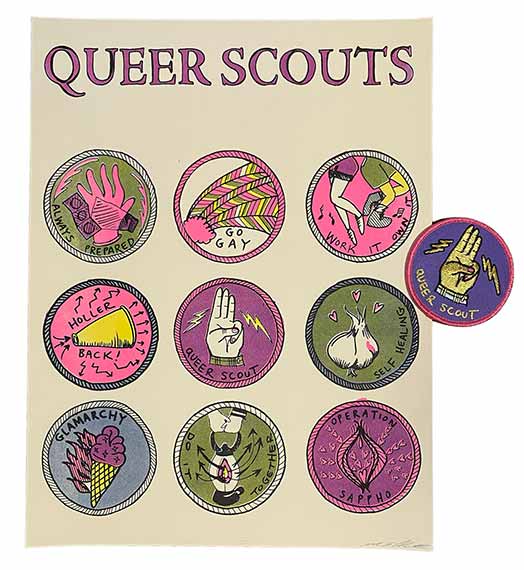By Sheila Navas
Hello readers! My name is Sheila Navas. I am a graduate student in Museum and Exhibition Studies at the University of Illinois at Chicago (UIC). During my education here I’ve been able to learn about different art forms and connect with different artists. I’ve been able to see first hand the power art has to create community and inspire people from all walks of life. In the Showcasing Movement Graphics class at UIC students were in charge of putting on two exhibitions, and in the process were able to learn about movement artists. It was through this process that I first encountered Mary Tremonte’s work.
Mary is an artist, educator, DJ, and a founding member of the Justseeds Artists’ Cooperative. Her fun and alternative take on the Girl/Boy Scout Badges, and use of color throughout her work really captivated me. I wanted to find out the background of the badges and also her take on what being an artist activist entails. So I reached out to ask her some questions.
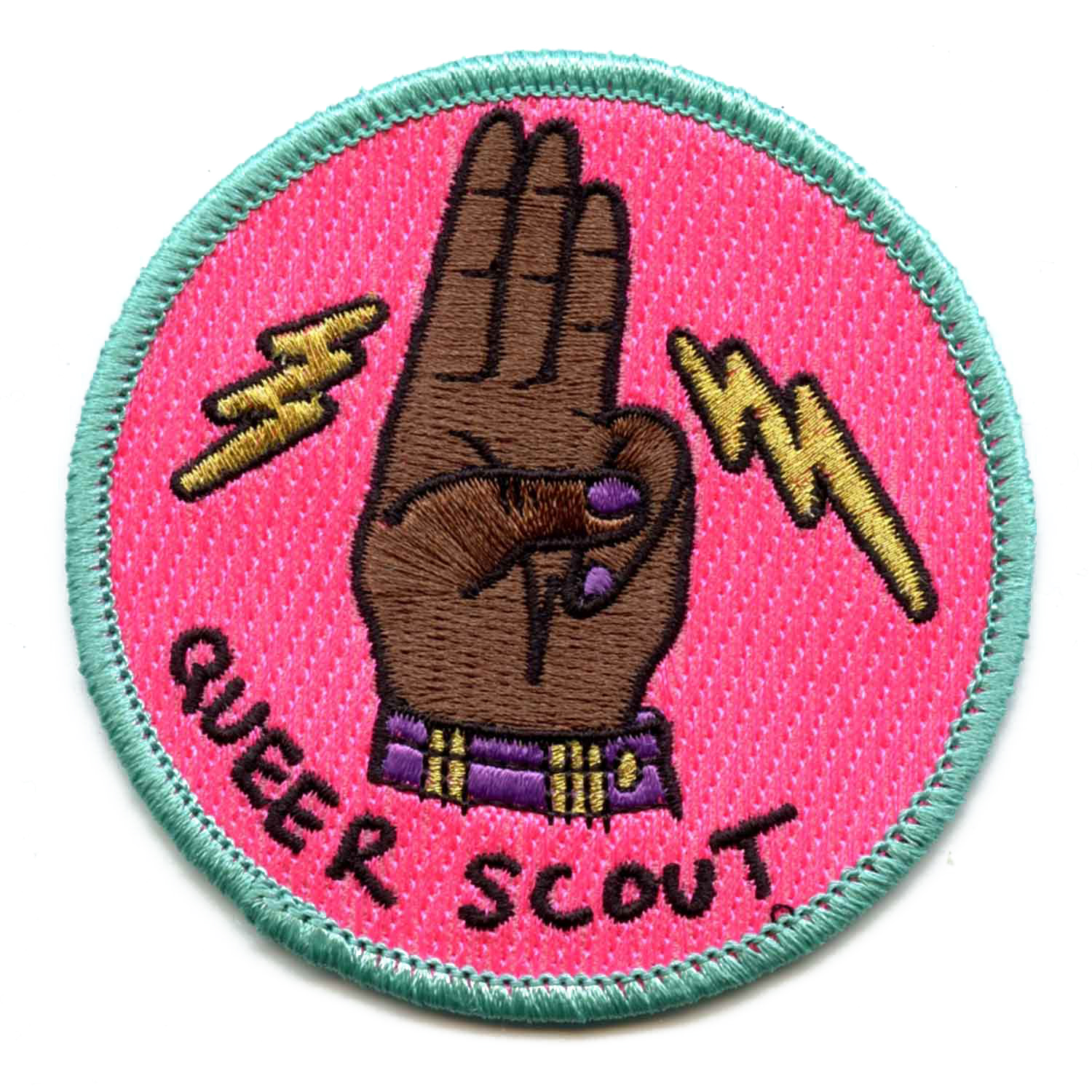
Sheila Navas (SN): Your work was featured in the Networks of Resistance exhibition last year alongside other Justseeds artists. Do you think collaborations like the Networks of Resistance show are important for activist artists?
Mary Tremonte (MT): Yes absolutely! I think that working in a way that is collective and collaborative rather than individualistic is part of a world we are working towards building through our activism. I think that it’s a great process that activates our work. It was also great to see not just Justseeds work but current activist collectives in Chicago and other people whose work I hadn’t encountered before.
It was so inspiring to see it all in one place like that!
SN: At what moment did you realize you were an activist?
MT: I don’t know if there was a precise moment. I’ve been making zines and going to actions since I was 15 or 16 years old. I was really involved with reproductive health issues in high school in the 90’s, so I’m not sure if I can pinpoint one exact moment but I always thought that getting involved with actions that call to you are important!
SN: What validates being an activist? What ideals or morals do you think activists need to have?
MT: I think it’s going to vary from person to person in their own definition and sense of justice. I think it’s important for people to recognize when injustice happens and then recognizing that, bringing people into safe spaces is important. If I see my neighbor or other people in my community, or in my country, and even anywhere in the world that are facing oppression, it hurts me because everyone is interconnected!
I think a sense of justice and fairness, Justice and love! That’s what we need!
SN: What role do you take as an activist artist in today’s society?
MT: I think a lot of the work I do is about visibility and about creating and strengthening a public. Not just one general public, but people that are connected through identity, or a mix of identities that intersect. I try to make a space for them to find one another. That’s why I made the Queer Scout Badges because that’s something you can wear as a visible signifier to other people. Also, I DJ and organize parties in order for people to come together and connect! They all have the same root of building solidarity and community.
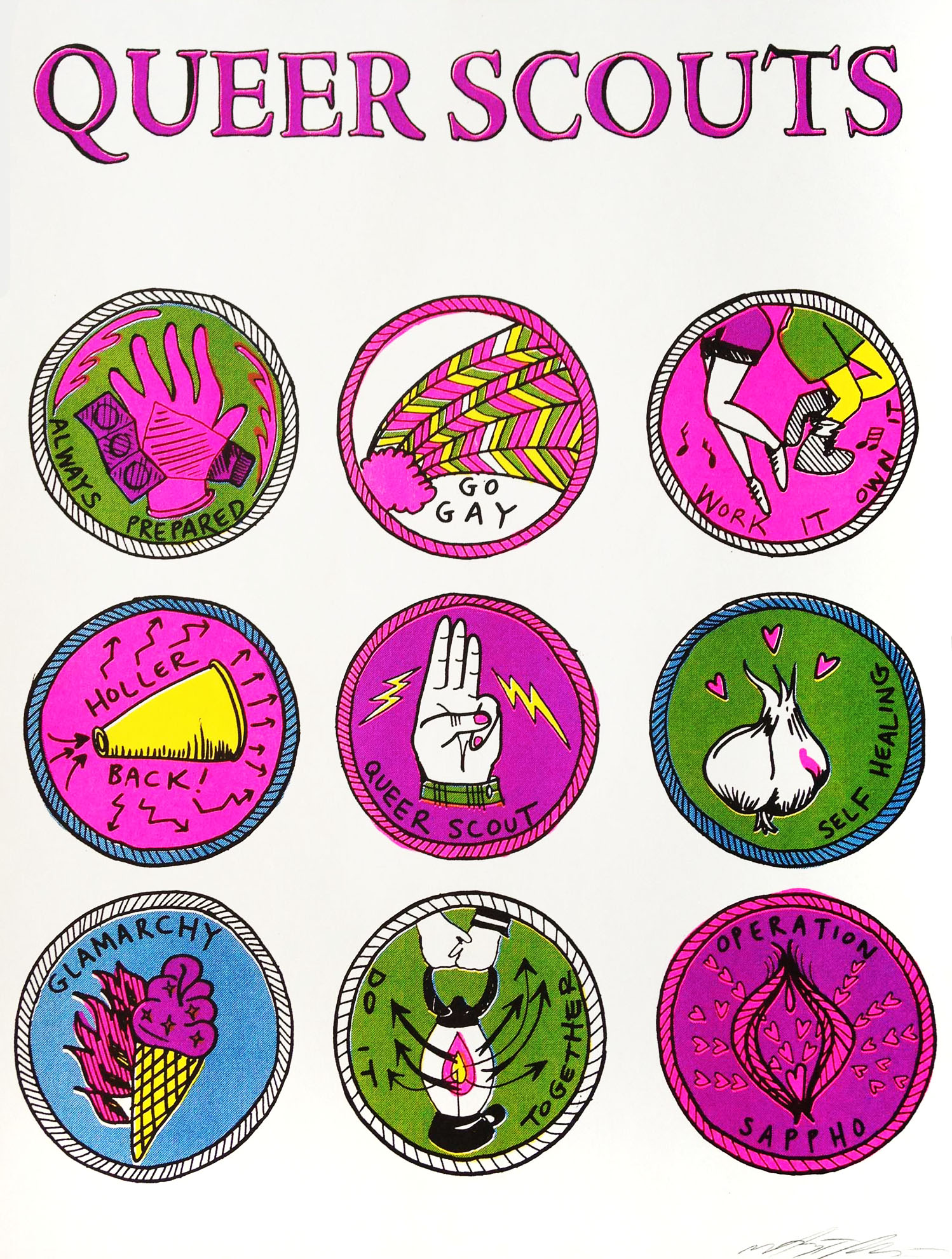
SN: In the Networks of Resistance exhibition, Mary Tremonte’s Queer Scout Badges and Sashes were on display and I was taken back by the provocative twist on the traditional Girl/Boy Scout badges. I loved the inclusivity, the use of bright colors, and the messages on the badges. I thought they were both playful but powerful. These pieces are one of the reasons I really wanted to talk to Mary, but I wanted to know not just the history, but the award process! How does one earn them?
What are the different Queer Scout badges a person can earn? How do you award them?
MT: [Laughter]
When I first made them it was more of a figurative idea of making a “real” Queer Scouts but there isn’t a formal awards ceremony or anything! You can award them to your friends whenever you feel like they’ve earned it!
I made a poster with all of the Queer Scout badges for a queer dance party called Operation Sappho that had different themes! I drew them because one of my friends who was the outdoorsy type and talked about having some sort of badge. So I drew some up and distributed them at the next party.
You know a lot of queer people live in cities, but also in rural places, and I was thinking about connecting with natural queerness. I think about how nature and animals move through this world with different identities.
SN: How do you see activist art within institutional spaces such as museums?
MT: I struggle with this a lot because a lot of activist art is a concept created as a part of a social movement. So in putting it into a gallery or museum the institution has to contextualize what the original context of the artwork was. I believe that the original context gets lost when the activist activity behind the art is excluded. I think it is the responsibility of the curator to translate and help frame not only what the objects are but what role they had out in the world.
I think contextualizing is really key, and it gets lost in those institutional spaces, but it was great to see how different it was in the Networks of Resistance show. Being that the show was organized by Aaron Hughes, who is an activist artist, and has a lot of connections to the movements and artists. I think that from that perspective the context behind the art exhibited was still there and seeing all the work together and where the connections are between each group creating art for social change and social justice is amazing.

SN: Do you feel like your queer-fem identity is an integral part of your DJing persona?
MT: Yes. [Laughter]
I do a lot of DJing workshops with younger people, especially teenagers, and I think that the two most important aspects of being a DJ (in my book) are transitions, and then your own personal taste and flavor as a track selector. It’s about your playlist and what that says about you and how you connect to each song. You’re telling a story and creating a narrative on the dance floor!
A lot of the songs I have are made by queer people or have a queer influence which has a lot of effect on me and my DJing style. I DJ weddings, art openings, and everything in between. It’s just fun to see everyone dancing and enjoying your narrative.

SN: Have you been able to find community, beyond solidarity, with other female+ identifying individuals involved with art activism?
MT: Well I’m part of a collective that is mainly male and male-identifying. I think it’s important for minorities to stick together, but I also think that solidarity is important and essential for growth. I think men have an important role in social movements.
I noticed at the Networks of Resistance show there were a lot of women and women of color represented at the show. I thought it was beautiful to see and important to bring up! I don’t know if other people noticed, but I thought it was amazing to see so many women’s artwork up at that show.
SN: Out of the several topics of social justice explored in your art which one do you identify with the most and why?
MT: I don’t know. I guess I would say queer equality for lack of a better term, but I just think again about how queer nature is and I come back to that a lot. I think about decolonizing and about how indigenous people understood different ways of life and being in the world that are not white-male-European ways. Looking at how different animals and plants and even human societies that are not centered around binary-colonial practices. I think we need to adjust our points of view. Actually, I think we just need to change everything! [Laughter]
Radical shifts and radical change. [Laughter]
Every day I try to unlearn something and put new ideas out into the world. Part of being an artist is to make something new or something that didn’t exist before and try to envision things in a new way.
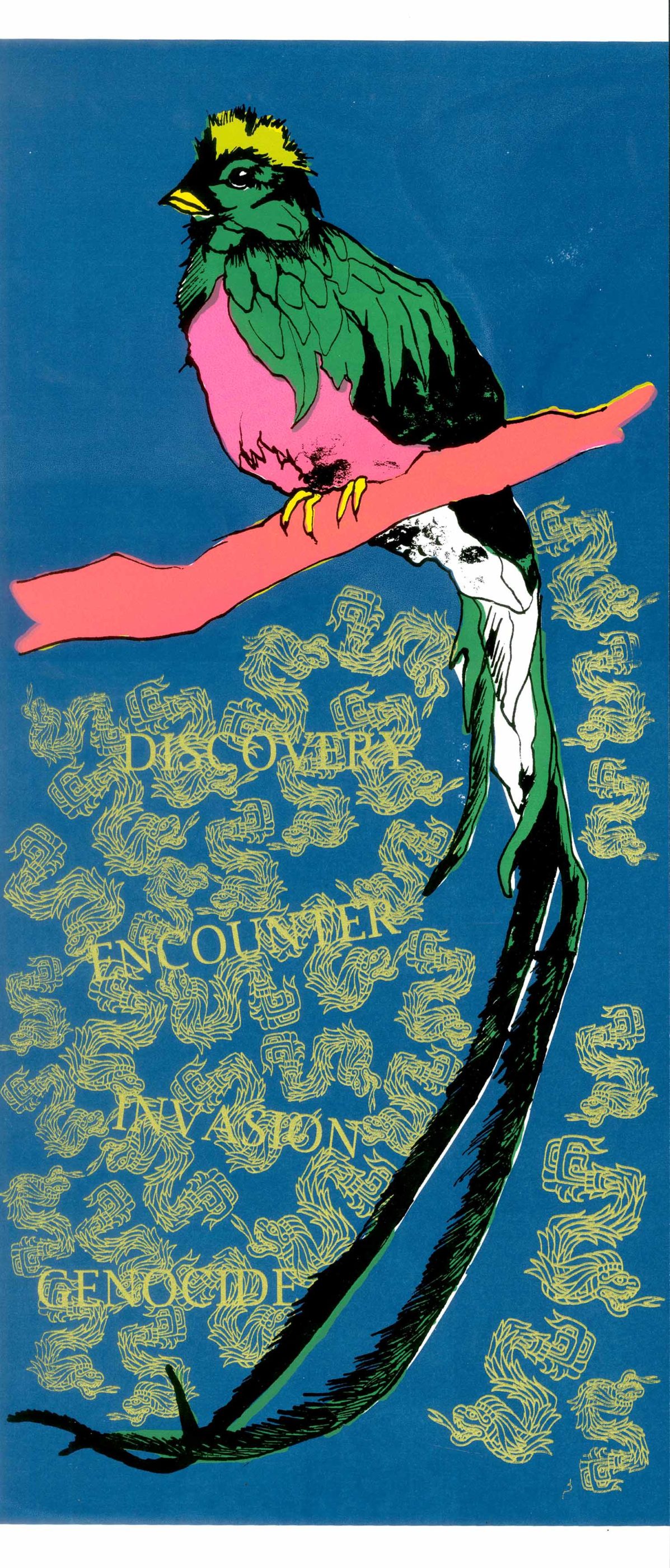
SN: My personal favorite print is your Discovery to Genocide. I’m Guatemalan and the Quetzal is our national bird; I hold it very near and dear to my heart. Can you explain the background of that print and how you saw the connection of genocide, history, and the Quetzal?
MT: Yes! That was actually a friend of mine who is not Guatemalan but had been there and showed me the Quetzal and I said, “that bird is amazing I need to draw that.” [Laughter]
At the same time, I was reading Howard Zinn’s A People’s History of the United States. The image to me is how we frame history like Zinn’s book. The “encounter” of Christopher Columbus with the people in the Americas versus the “genocide” that actually occurred. The quetzal embodies the ecology of the indigenous people’s perspective of the land we’re on now.
Everyone should read that book!
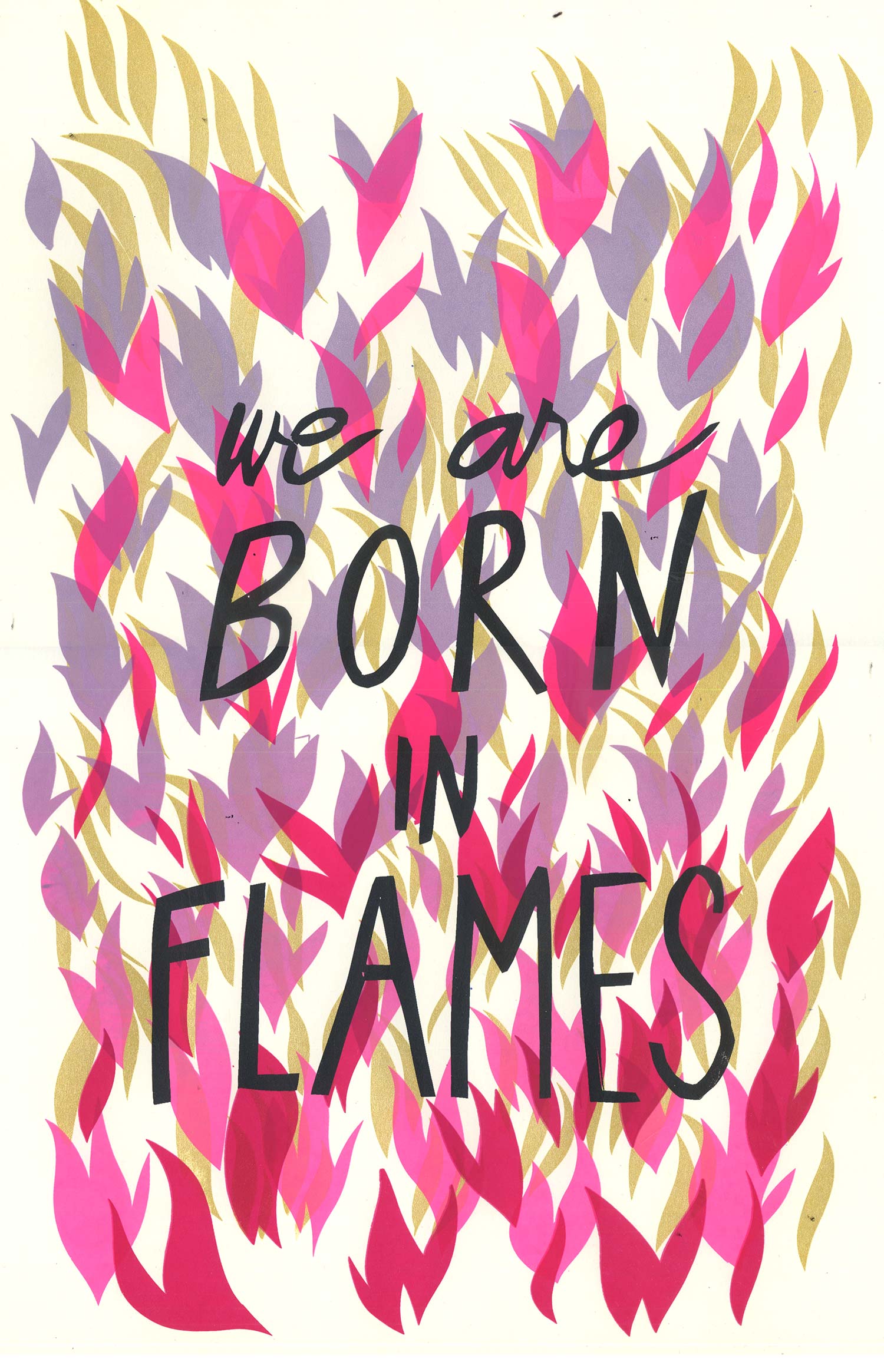
SN: My conversation with Mary really reaffirmed that in life we are responsible not only for ourselves but for the wellbeing of our neighbors and friends. As we talked there were a lot of moments where she would go back to that notion of queerness in nature and helping others. I think that if we look at life with this view, we might be able to care for each other and the planet in a more sustainable way. Mary said it best, “we need more justice and love in this world!”
Check out more on Mary Tremonte’s work you here.
Links and Resources:
- Mary Tremonte Justseeds: https://justseeds.org/artist/marytremonte/
- Mary Tremonte Twitter: https://twitter.com/marymack_pgh
- Mary Tremonte Instagram: https://www.instagram.com/chickpealady/
- Howard Zinn’s A People’s History of the United States: https://www.harpercollins.com/9780062397348/a-peoples-history-of-the-united-states/
Sheila Navas is a graduate student at University of Illinois at Chicago. She took part in the Museum & Exhibition Studies course Showcasing Movement Graphics taught by Justseeds member Aaron Hughes. During the course students took part in organizing, curating, and installing the Networks of Resistance show. This interview was originally conducted in 2019 as part of that course and was edited for publication in 2020.
